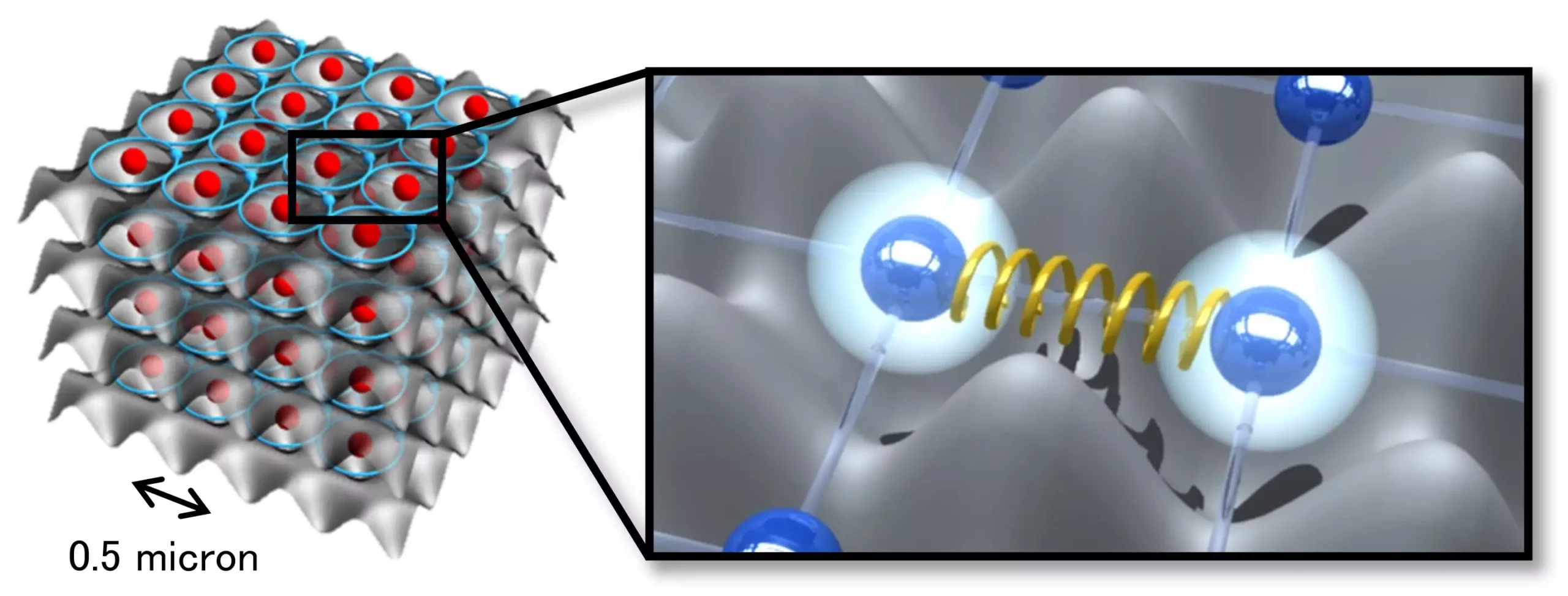Quantum entanglement remains one of the most fascinating phenomena in the realm of quantum physics, underpinning the very fabric of advanced quantum technologies, including computing, sensing, and simulation. The recent research conducted by the Institute for Molecular Science marks a significant breakthrough in our understanding of quantum entanglement, particularly concerning electron and motion states within ultrafast quantum simulators. By employing the unique properties of Rydberg atoms—atoms excited to high energy levels—they have demonstrated that the repulsive forces generated through strong electronic interactions can lead to unprecedented types of quantum entanglement, paving the way for new experimental methodologies and technological applications.
At the center of this groundbreaking study are Rydberg atoms, which possess enormous electronic orbitals. These atoms can be manipulated to generate entangled states that are crucial in quantum simulations. The intricate relations between various quantum states help researchers understand how to harness these particles for practical purposes in technology. The research team meticulously examined a system comprising 300,000 rubidium atoms, cooled to an astonishing 100 nanokelvin, using sophisticated laser cooling techniques. The resulting optical lattice created a controlled environment in which the delicate interplay of quantum mechanics could be observed.
The researchers utilized an ultrashort pulse of laser light, lasting only 10 picoseconds, to create quantum superpositions of states—specifically the ground state with an electron in the 5s orbital and the excited Rydberg state in the 29s orbital. This meticulous setup allowed the team to circumvent a limitation commonly associated with Rydberg atoms known as “Rydberg blockade.” Traditionally, this blockade restricts the proximity of Rydberg atoms by preventing the excitation of nearby atoms. By executing ultrafast excitations, the study pushes the boundaries of what is possible in quantum state manipulation.
The authors’ groundbreaking work in tracking the time evolution of quantum superpositions revealed a remarkable discovery: the formation of entanglement not only among electronic states but also between electronic and motional states within just a few nanoseconds after the initiation of the ultrafast process. Understanding that the strong repulsive forces between atoms in the Rydberg state are pivotal introduces a new dimension to quantum studies. These forces result in a meaningful correlation between the presence of an atom in the Rydberg state and its associated motion, allowing researchers to explore previously inaccessible quantum correlations.
What is especially intriguing is how this entanglement phenomenon occurs only when Rydberg atoms are spaced closely enough to align with the expansion of their atomic wavefunctions, specifically at distances of 60 nanometers. The innovative use of an optical lattice to achieve a spacing of 0.5 microns thus played a crucial role in enabling this interaction, shedding light on a sophisticated mechanism that increases our understanding of electronic-motional entanglement dynamics.
In addition to uncovering new entanglement phenomena, the authors propose exciting methods for quantum simulation that integrate the effects of repulsion between particles. By leveraging ultrafast laser excitation, they suggest that researchers can effectively manage the repulsive forces among trapped atoms, opening pathways for simulating complex systems. This methodology offers unprecedented flexibility in the design of quantum simulations, particularly those investigating materials or systems characterized by dynamic interactions of electrons and atoms.
The implications of these findings are monumental in the context of quantum computing. The researchers have also been at the forefront of developing an innovative ultrafast cold-atom quantum computer, pushing the speed of two-qubit gate operations forward significantly. By utilizing Rydberg states, they aim to enhance the fidelity of these operations, ensuring that the quantum computer can perform complex calculations accurately and reliably—which is crucial for the practical implementation of quantum technologies.
The advancements presented by the Institute for Molecular Science signify a major milestone in quantum simulation research, emphasizing the intricate connections between electronic and motional states of atoms. As this field continues to evolve, the use of ultrafast techniques to explore quantum entanglement will undoubtedly lead to transformative technologies in quantum computing and beyond. The prospects of harnessing these quantum states not only enhance our understanding of the quantum world but also inspire a vision for the future of quantum technology—where efficiency, accuracy, and computational power merge to facilitate new forms of scientific progress and societal benefit.


Leave a Reply